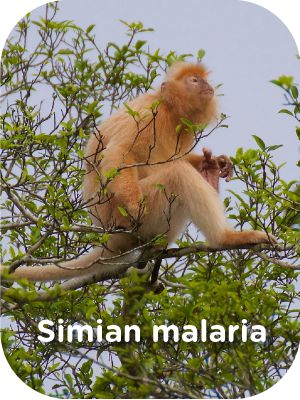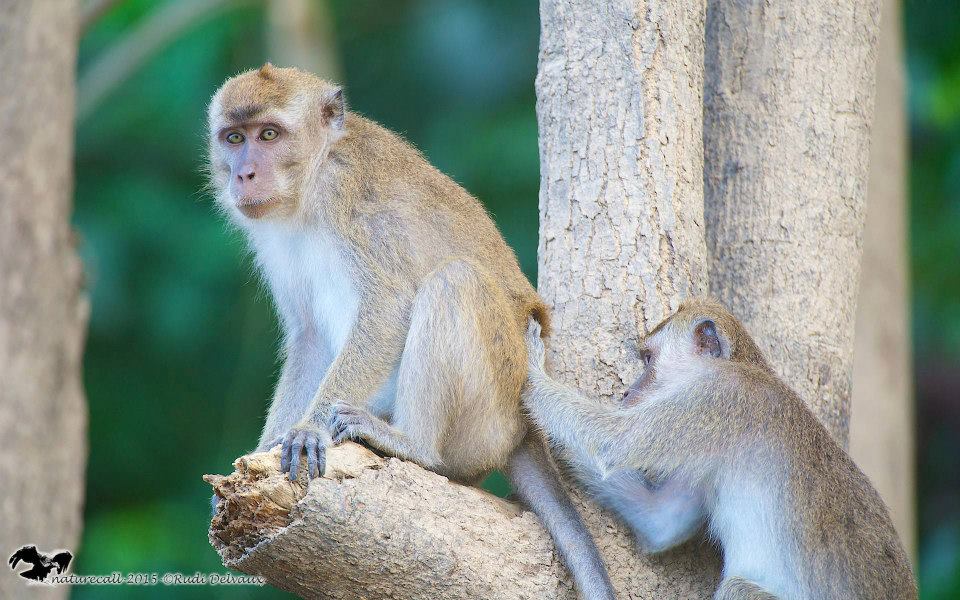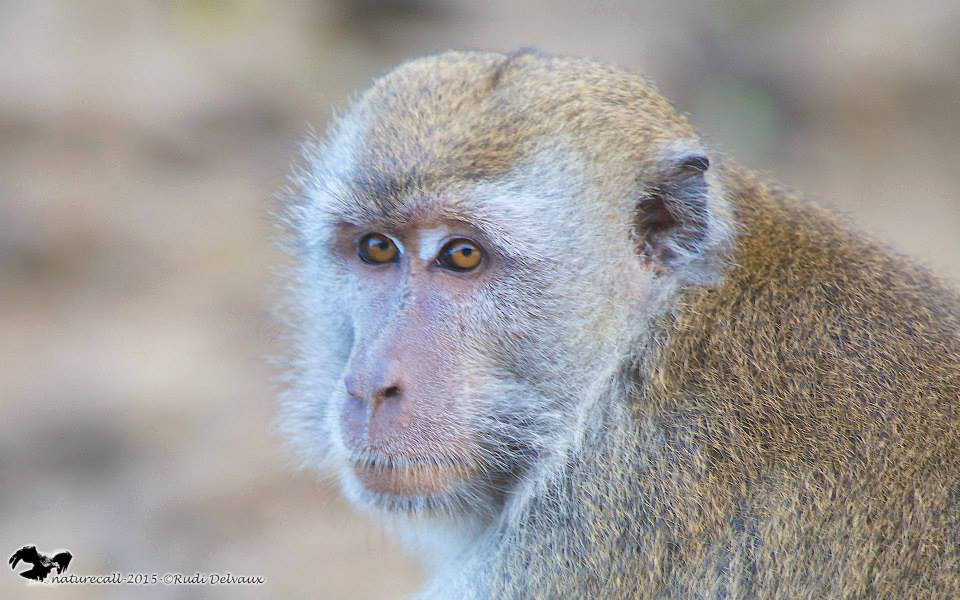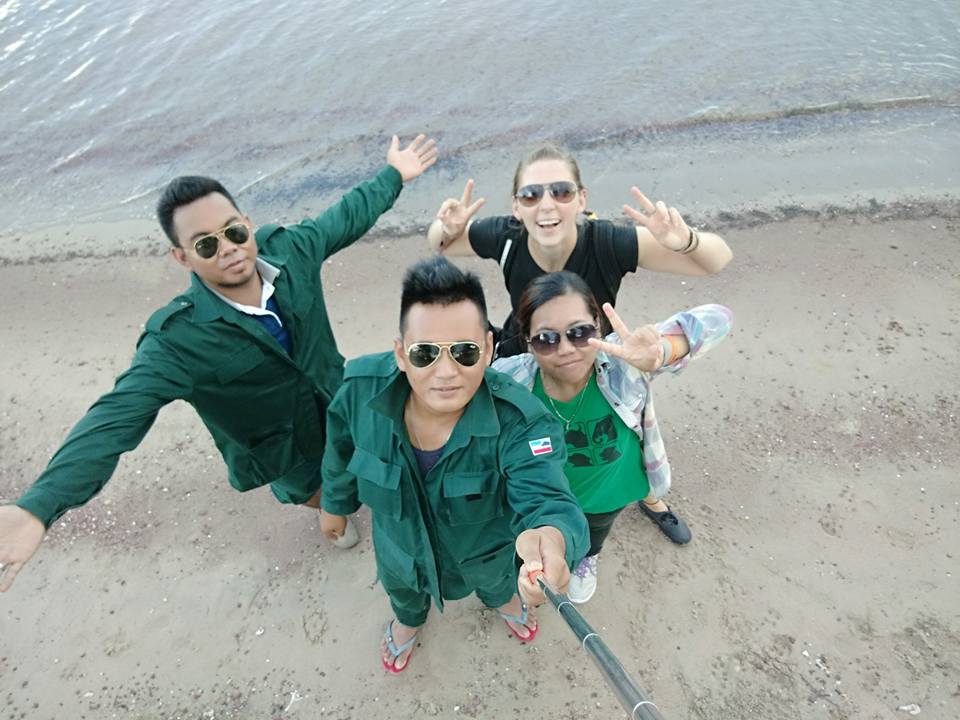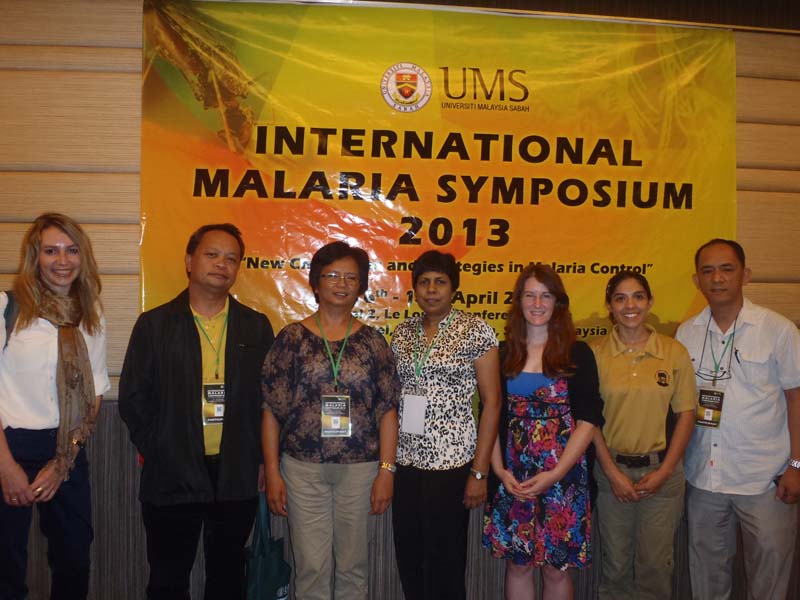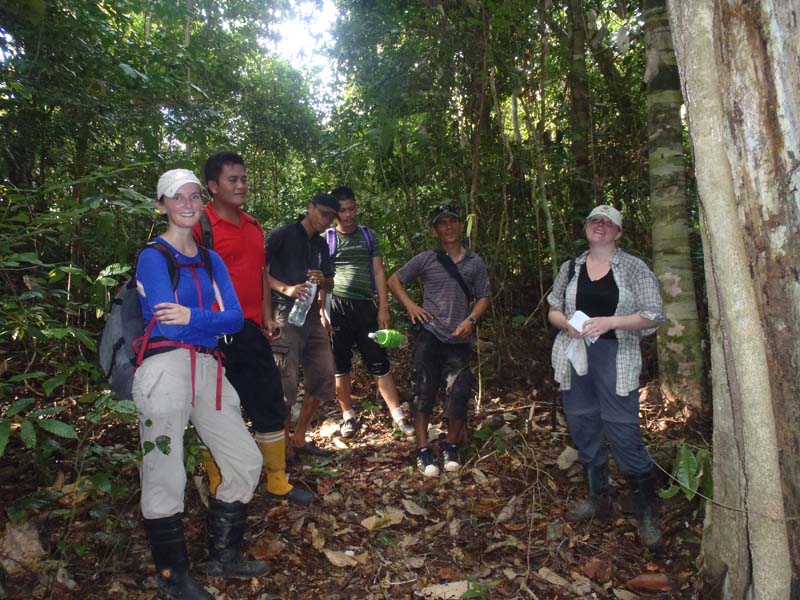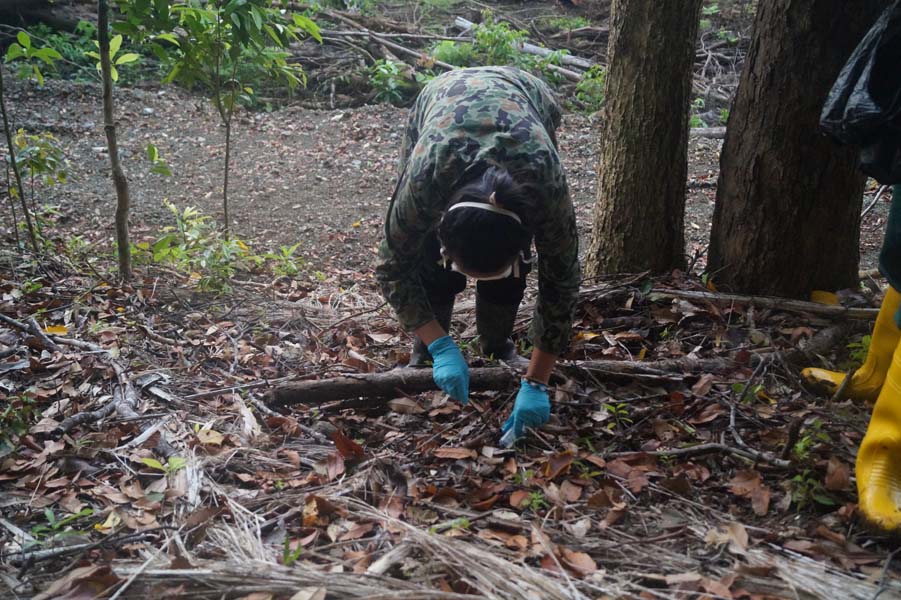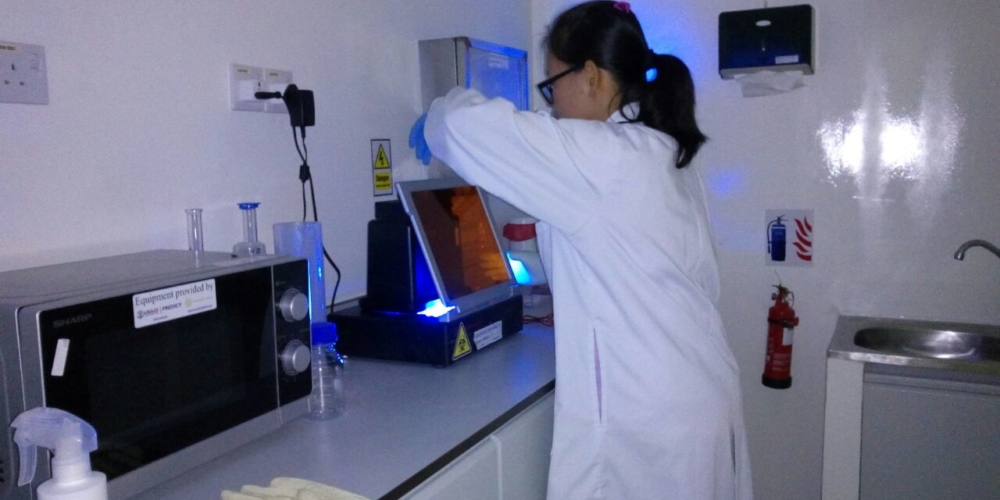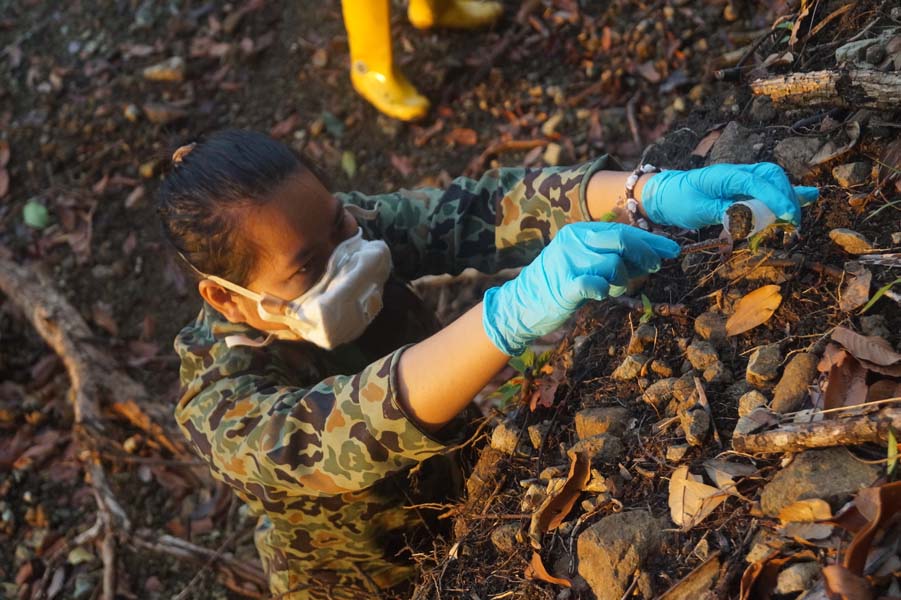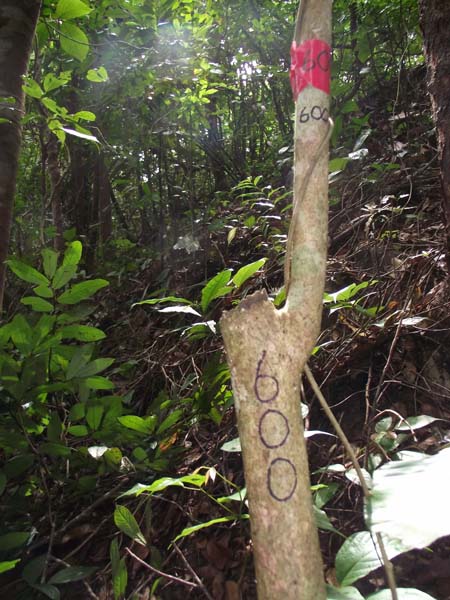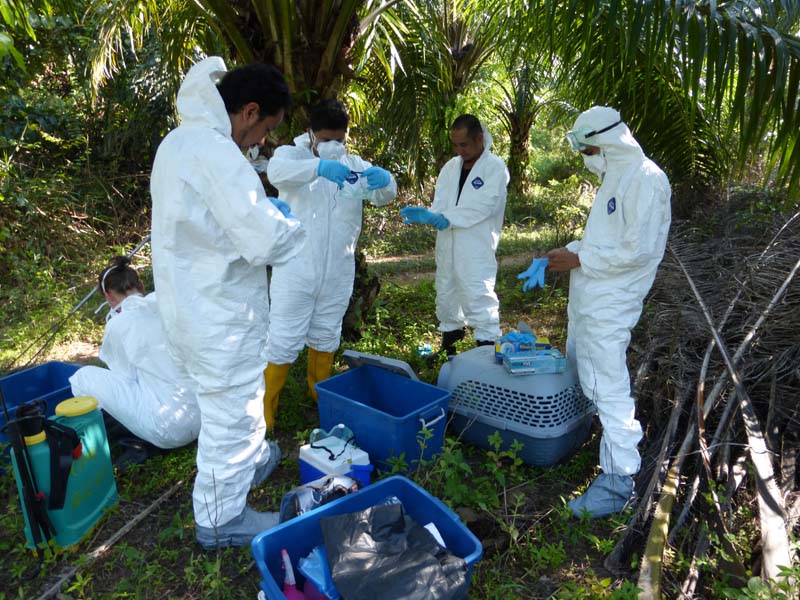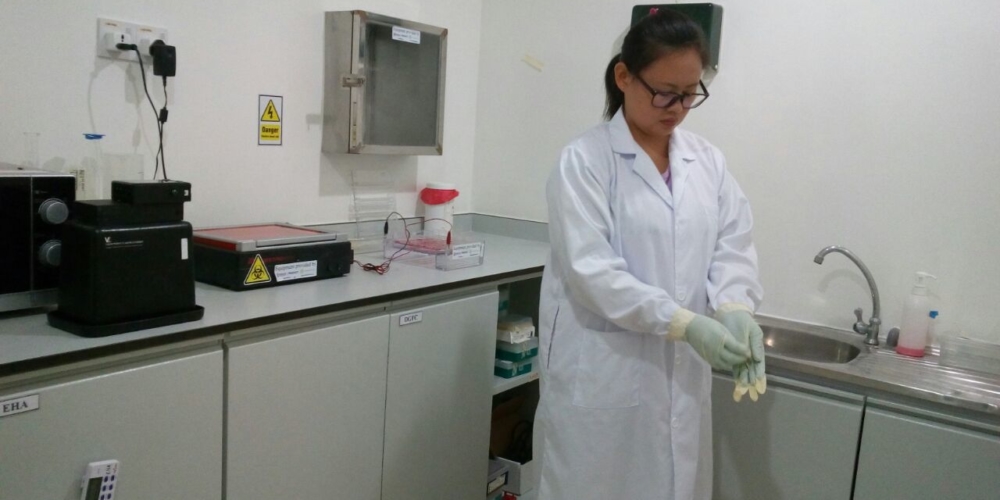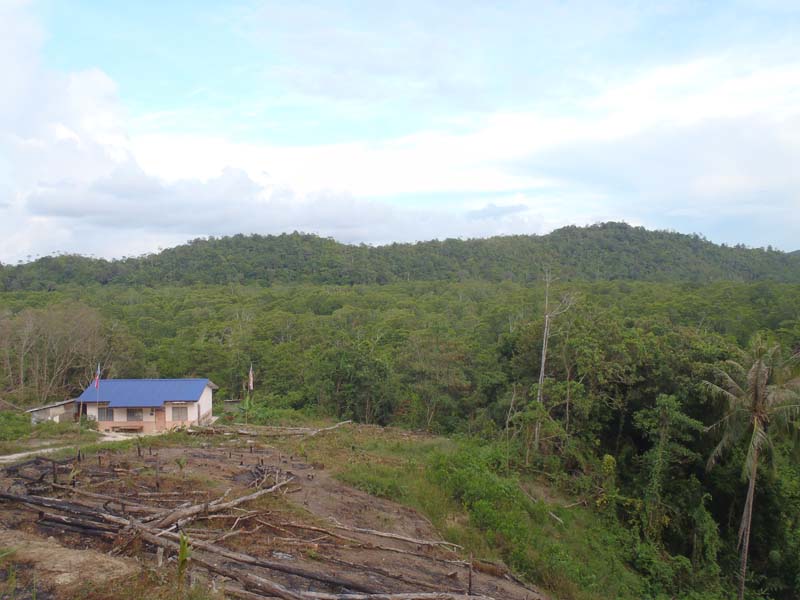The MONKEYBAR Project is an initiative by Dr Chris Drakeley from the London School of Hygiene and Tropical Medicine. It is run in collaboration with institutions from Malaysia, The Philippines, Australia and the UK, with funding from the UK. The study is a multi-disciplinary, integrated research programme to investigate the disease ecology of Plasmodium knowlesi, a malaria parasite which is now considered the fifth malaria parasite infecting humans. The project combines entomology and parasitology with clinical medicine, epidemiology, primatology, social science and spatial science, and it has been running in parallel in two sites: Sabah, Malaysia, and Palawan, The Philippines. The MONKEYBAR Project has two intensive study sites in Sabah: Banggi Island and the Kudat District. The whole study area in Sabah also includes the districts of Pitas and Ranau.
Plasmodium knowlesi (Pk) is a malaria parasite whose natural hosts are non-human primates, mainly the long-tailed and the pig-tailed macaque (Macaca fascicularis and M. nemestrina, respectively). It is transmitted by the bite of a vector, an anopheles mosquito of the Leucosphyrus group. Knowlesi malaria is not a new disease (identified in the 1930s), but became clear as a zoonotic disease in 2004. The increasing epidemiological evidence points Pk as an emerging public health problem and some local governments in Southeast Asian countries are now routinely screening patients for Pk. In Sabah, Pk has shown an increasing trend as the other malarias have been controlled. This type of malaria poses a risk of severity three-fold greater than that of P. falciparum. The transmission dynamics of Pk seem complex and similar to those of Yellow Fever, with a sylvatic cycle and an urban cycle. However, there are many aspects of the disease that are not known. For example:
- What are the demographic groups at risk?
- Are there any social practices involved with the spread of the disease?
- What are the vectors responsible for transmission?
- What aspects of the macaque ecology and behaviour are directly related to the transmission of Pk?
- Are the environmental and land use changes involved, and how?
- What are the interactions between the land use, the hosts, the vectors and the parasites?
The MONKEYBAR Project aims to respond all those questions under the main hypothesis that deforestation and changes in environmental conditions, and human-macaque-vector contact are key drivers in increasing the risk of P. knowlesi infection in humans.
The core of the project is a Case Control study, which is supported by four additional components: Entomology, Social Science, Land Use, and Primatology. The information gathered by all the components is being used to prepare models of disease transmission. The Case Control component recruited all malaria cases in Kudat and Kota Marudu hospitals; for each case there were 3 controls from the same village. The Entomology component investigated anopheline diversity, identifying the Pk vectors, and their distribution in time and space. The Social Science component worked with entire villages within the intensive study sites to identify disease perception through photovoice group discussions, and identified human behaviour linked to the disease with time allocation studies and GPS tracking of random people in the area. The Land Use component used a drone to map the study sites and classify land types; it’s also defining how environment affects the distribution of people, mosquitoes and macaques which may contribute to infection risk.
DGFC designed and is leading the Primatology component in Sabah under the authority of the Sabah Wildlife Department. Habitat loss can also change the behaviour and abundance of wildlife which in turn affects parasite transmission and distribution since they are influenced (among others) by host ranging patterns, density, intraspecific and interspecific contact rates, and host diet. Furthermore, as human population density continues to increase, speeding the reduction and fragmentation of primate habitats, greater human-primate contact is inevitable and even higher rates of parasite transmission are likely.
The objectives of the Primatology component are:
1) Determine the species and location of diurnal primates in the study area.
2) Determine the number of long-tailed macaque troops, number of individuals per troop, and location of each troop within the study site.
3) Determine troops/individuals infected with Pk (and other primate malarias) using non-invasive samples.
4) Determine the home range and movement patterns of the (infected) macaque troops.
5) Define factors which influence the proximity and interaction between human and macaques
The Primatology component team in Sabah is co-supervised by DGFC’s scientific advisor and DGFC’s primatologist, supported by DGFC’s wildlife veterinarian. Fieldwork was carried out by a team of Sabahans (Senior and Junior), led by a Master student. Lab work is conducted by DGFC’s molecular biologist.

